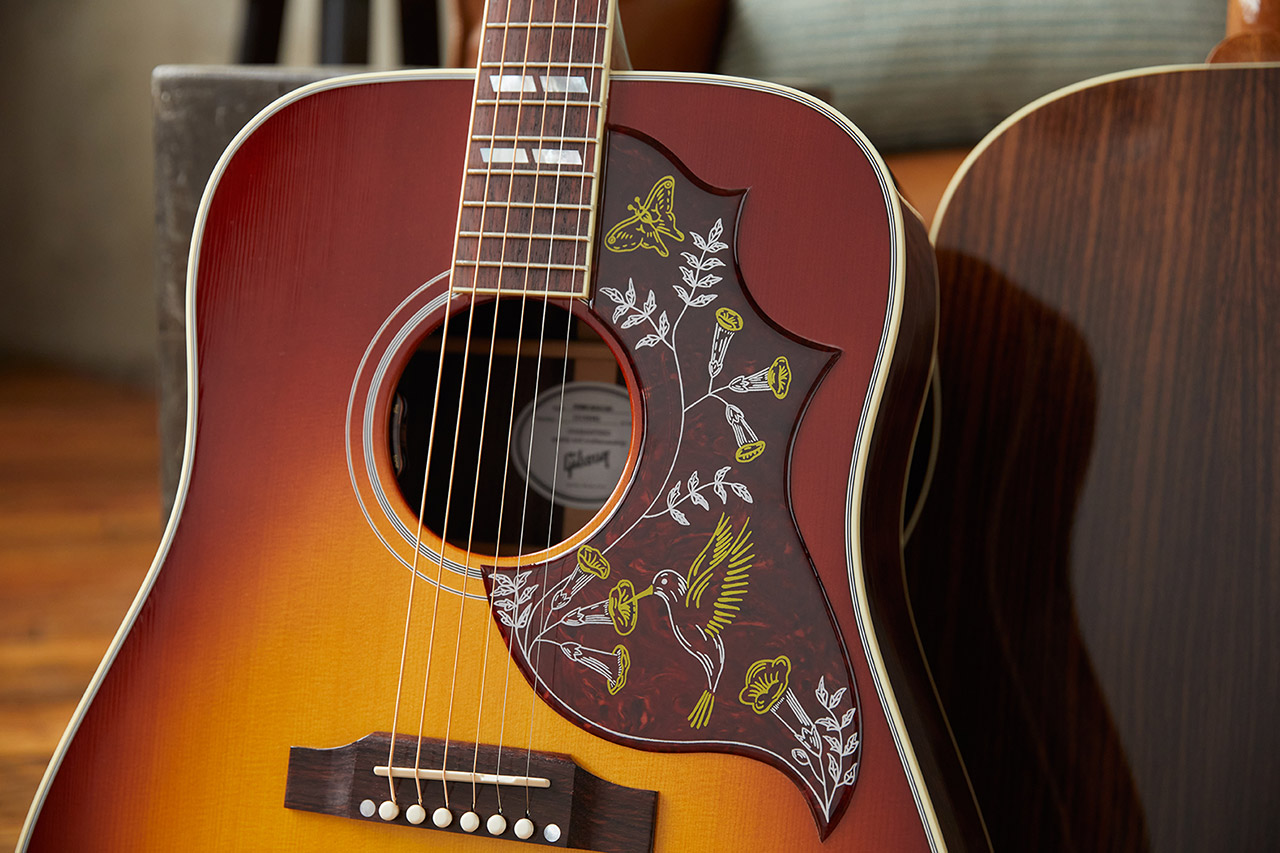Strings are the lifeblood of an acoustic guitar—without them, there’s no music.
Guitar strings play such a vital role in the sound and feel of your instrument that it’s worth understanding the many different types of acoustic guitar strings. Join us as we compare steel and nylon, coated vs. uncoated strings, and the different gauges (diameters) of strings.
The Different Types of Acoustic Guitar Strings
We’ve come a long way from the catgut strings (made from animal intestines) that used to be the default option.1 Today’s acoustic strings are as high-tech as they are simple, combining years of R&D with long-standing knowledge to ensure a consistent playing experience.
Despite all the options, when you’re shopping for acoustic guitar strings, you’re essentially choosing between two categories: steel and nylon. And if you’ve already purchased a guitar, you’ve already made that choice—a steel string guitar’s bridge won’t typically accommodate nylon strings, and vice versa.
Steel Strings
Steel strings are named for their core. The internal core of a steel acoustic guitar string—which can be round or hexagonal—is made of steel. You’ll see this core in plain sight on the higher B and E strings, which aren’t wound. The lower strings of an acoustic—E, A, D, and G—are wound.
In general, steel strings have a ridged feel and a brighter, more lively tone. That said, the specific sound of a string depends on the material of the lower wound strings.
For most acoustic guitar types, there are two dominant types of steel strings.
80/20 Bronze Strings
The windings of these strings are made from a blend of 80% copper and 20% zinc. In general, 80/20 Bronze strings start with a bright, crisp sound that mellows slightly as the bronze oxidizes, making them ideal for any style of music.
Phosphor Bronze Strings
The windings of these strings have a higher copper content. They substitute tin in place of zinc and add phosphor to the mix. The phosphor extends the life of the strings, while the extra copper gives them a warmer, richer tone. Overall, phosphor bronze strings have a bright attack and a sustained warmth that makes them equally suitable for any genre—it’s all about preference.
Nylon Strings
As you might have guessed, nylon strings are named for their material: A smooth, relatively soft nylon that glides beneath the fingers. The three lowest strings in a nylon set are wound in metal.
Sonically, nylon strings are far more mellow than steel ones, with a roundness that’s often prized in classical guitar and folk music.
Video: Hand-crafted in Big Sky Country and available now at Gibson.com
Coated vs. Uncoated Strings
When it comes to acoustic guitar strings, you can choose from either coated strings or uncoated string sets.
Uncoated strings allow the metal to come in direct contact with your fingertips. Meanwhile, coated strings are covered with a microscopically thin layer of protective polymer. That added material can lead to differences in longevity and sound.
Longevity and Tonal Impact
Guitar strings degrade over time. As you play your guitar, the natural oils and sweat from your skin can cause the metal to corrode. The dirt and oils from your fingers can also build up in the string windings, further degrading the sound of the strings.
Thanks to that polymer layer, coated strings resist corrosion and generally last longer than their uncoated counterparts.
But what about the sound of coated and uncoated strings? Doesn’t the polymer layer affect string tension and tone?
Well, it can. Some coated strings have a slightly darker tone since the coating can dampen higher frequencies.
With Gibson acoustic guitar strings, that’s not an issue. The polymer on our coated strings is so thin that there’s no compromise in tone.
Understanding String Gauges
Once you decide on a string material and settle the debate between coated and uncoated, there’s still the question of the acoustic guitar string gauges. Like string material, string gauge impacts sound and feel.
Gauge Sizes
The “gauge” refers to the diameter (or thickness) of each string. For example, if you see a pack of strings marketed as 12–53, you’ll know that the low E string is .053” thick and the high E is .012” thick. The other string diameters, or gauges, included in the set should also be listed.
The lower the numbers, the “lighter” the gauge.
Effects on Playability and Sound
Light gauge strings impact string tension, so they feel lighter under your fingers. They’re easier to fret and bend, and some say they have a slightly brighter tone.
Heavier gauge strings are thicker, so they’re a bit harder to bend but also more robust. They’ll stand up better to lower tunings, so if you often play downtuned music, you’ll appreciate heavier strings.
When It’s Time to Restring, Choose Gibson
In the end, everyone has their preference. You’ll learn yours as you experiment over time.
Think about your playing, and go from there. For example, if your hands get tired after a long practice session or if you’re learning to play easy acoustic guitar songs, you may want to switch to lighter gauge strings. If you find yourself burning through strings, try a coated set next time. Check out our video on restringing for more guidance.
Whatever strings you choose, choose Gibson. Our acoustic guitar strings are crafted with the same care and attention as our instruments—so you can enjoy the ultimate tone and quality every time.
Sources:
- Encyclopedia Britannica. catgut. https://www.britannica.com/technology/catgut

